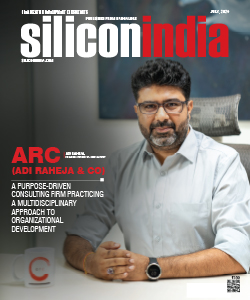India's digital public infrastructure is praised by the World Bank in a G20 document
By
siliconindia | Friday, 08 September 2023, 02:23:16 PM IST

In a G20 document, the World Bank praised India's digital public infrastructure. India's digital public infrastructure has had a seismic impact that goes well beyond financial inclusion. According to the document, India has accomplished milestones that would have taken five decades or more to accomplish in the past. UPI, Jan Dhan, Aadhar, ONDC, and CoWin were given as examples in the document created by the financial institution. India has created some of the best digital public goods infrastructure, which has the potential to transform lives all across the world.
The World Bank document prepared ahead of the big G20 Summit in New Delhi highlighted the key measures taken by the Modi government and the pivotal role of government policy and regulation in shaping the Digital Public Infrastructure (DPI) landscape. World Bank said JAM (Jan Dhan, Aadhar, Mobile) trinity a combination of bank accounts for all, Aadhaar, and mobile connectivity has propelled the financial inclusion rate from 25 percent in 2008 to over 80 percent of adults in the past six years, a journey which according to it shortened by up to 47 years thanks to DPIs.
“While DPIs’ role in this leapfrogging is undoubted, other ecosystem variables and policies that build on the availability of DPIs were critical. These included interventions to create a more enabling legal and regulatory framework, national policies to expand account ownership, and leveraging Aadhaar for identity verification,” the document said. Since its launch in 2014, the first year under Narendra Modi’s prime ministership, the number of PM Jan Dhan Yojana accounts tripled from 147.2 million in March 2015 to 462 million by June 2022; women own 56 percent of these accounts, more than 260 million.
The Pradhan Mantri Jan Dhan Yojana (PMJDY) the national mission for financial inclusion and banking the unbanked completed nine years of implementation. The initiative was announced by Prime Minister Narendra Modi in his maiden Independence Day address from Red Fort in 2014. Later he launched the programme on August 28, 2014. PMJDY has brought the unbanked into the banking system, expanded the financial architecture of India and brought financial inclusion to almost every adult. Further, the World Bank also noted how India leveraged technology to directly transfer benefits to the citizens, besides using UPI for retail payments.
“The DPI in India has also enhanced efficiency for private organizations through reductions in the complexity, the cost and the time taken for business operations in India,” it said. Unified Payments Interface (UPI) is India’s mobile-based fast payment system, which facilitates customers to make round the clock payments instantly using a Virtual Payment Address (VPA) created by the customer. UPI payment system has become hugely popular for retail digital payments in India, and its adoption is increasing at a rapid pace. A key emphasis of the Indian government has been on ensuring that the benefits of UPI are not limited to India only, but other countries, too, benefit from it. So far, Sri Lanka, France, UAE, and Singapore have partnered with India on emerging fintech and payment solutions.
Read More News :
Dipak Gupta has been appointed by the RBI as Kotak Mahindra Bank's interim MD and CEO
India's G20 presidency at a crucial moment for the world economy: OECD Sherpa



